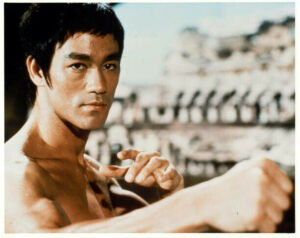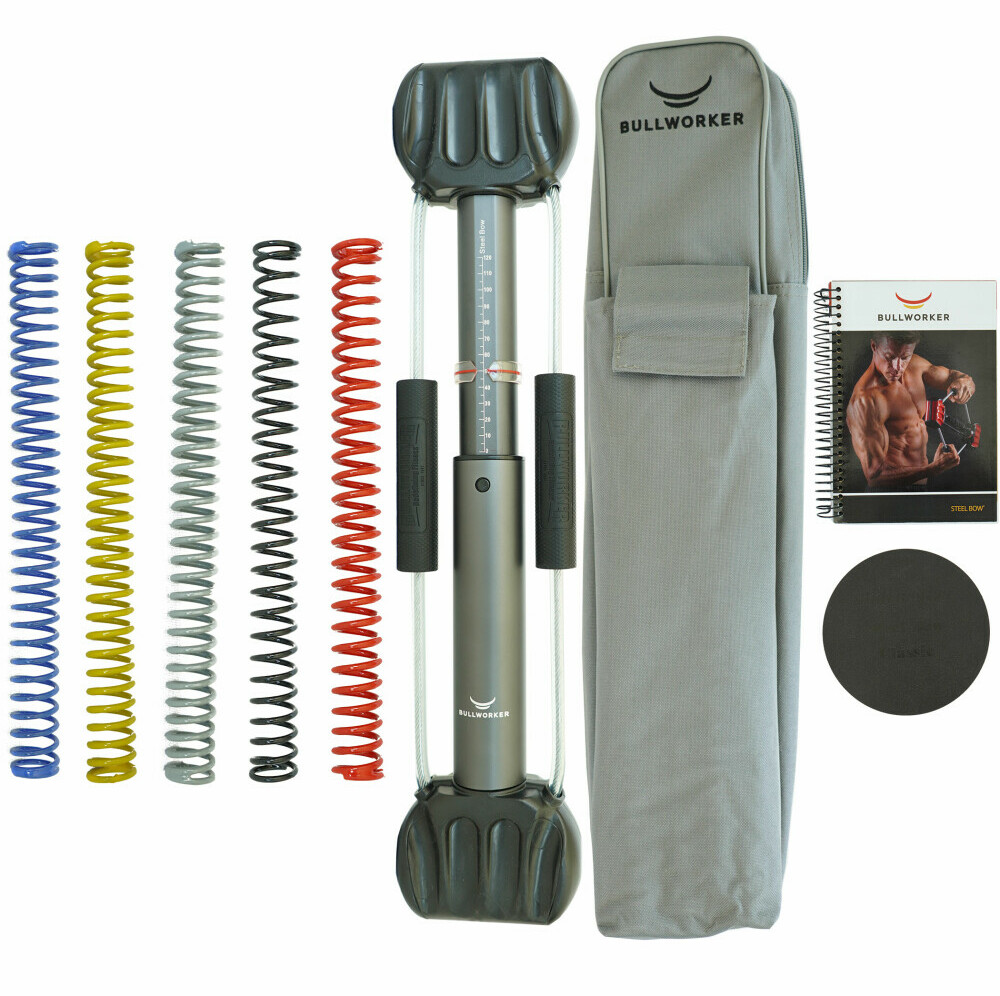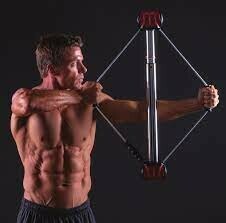A BRIEF BIT OF HISTORY
Bullworker is a product and fitness company, initially specializing in isometric exercise. Isometrics involve a muscle contraction in which the length of the muscle remains static under tension. In isotonic movements, the muscle length changes as it contracts and then relaxes.
It is important to point out that Bullworker tools have evolved to allow for both isometric and isotonic movements. I don’t know of any other exercise device that gives us the option for both modes of muscle contraction within the same set of reps.
The value of isometrics may be noted as we consider the effectiveness of planks for core development.
The original Bullworker was invented by Gert F. Kolbel in 1962. Its popularity was immediately apparent, especially in Europe.
Jon Pall Sigmarsson of Iceland was a Bullworker user, as well as the “World Strongest Man” winner four times.
He is shown below.

Prince Philip was a lifetime Bullworker user. He was fit and healthy for an amazing 99 years.
Bodybuilder Len Sell used Bullworkers and was Mr. Universe twice.
Gert F. Kolbel cites a couple of other Bullworker users, namely Konrad Adenauer and Muhammad Ali.
Another well known Bullworker user was martial artist and movie star Bruce Lee, who used Bullworkers to strengthen his striking muscles. He is shown below.

HOW DO THEY WORK?
THE STEEL BOW
The Bullworker Steel Bow is shown below. The steel cylinder accommodates springs of different tension levels. We may push against the thick black handles at each end for either an isometric contraction or an isotonic set of reps. Or both. The five springs give us plenty of resistance to use. We can change springs as easily as we might change barbell plates. Actually much easier.
The principle of progressive overload is a part of the process, meaning we grow in muscle strength as we raise the resistance and/or the reps and sets. Bullworker recommends a hold of about 7 seconds, followed by 10 reps.
I may be a maverick, but I do the reps first, sometimes 30-40, followed by a hold of 10-20 seconds.
At one point, I positioned myself upside down on my inversion table and did chest compression reps, i.e, pushing the handles together for as many reps as I could, with lengthy holds.
Note the smaller black handles at the midpoint of the cables on each side. This allows us to spread the cables against the same spring resistance, or we may change the springs.
In general, pushing the thicker handles together as we hold the Steel Bow in front of our chest is an ideal pectoral developer. Pulling the handles apart is more a back or shoulder exercise. An advanced routine is to first push the thicker handles together with reps and a hold – and then pull the other handles apart in super set fashion. If we are ambitious, we may do three super sets in this manner.
The handbooks give us all of the possibilities we could want for a full body workout. The carrying case and stability pad are more niceties. The Steel Bow is 20 inches in length and very portable if we are traveling and need to be sure we have a workout plan.
I have had a Steel Bow for about 5 years and use it primarily for chest compressions and seated press-downs for my abdominals. I have often taken it with me when traveling.

THE BOW CLASSIC
A larger Bullworker, at 36 inches in length, is the Bow Classic. The only real difference vs. the Steel Bow is the length difference and, of course, the resulting exercise capabilities. Take a look at the Bow Classic “archer” exercise shown below.
This is an excellent back developer, as we work one side of our bodies, then the other. I do the archer exercise, plus a cable spread for the back and shoulders. The cable spread using the Bow Classic gives us a much greater range of motion than we can get with the Steel Bow.
There are also several leg exercises that we can do with the Bow Classic.

I have both the Steel Bow (ideal for chest development) and the Bow Classic (for back development). Since I have specific applications of each tool, it seems appropriate to show the many other exercises that are available that I don’t do.
Here is a Steel Bow chest workout video
Here is a Bow Classic back routine video
This video is a very quick isometric only upper body routine
Here is a video by a young bodybuilder who uses both free weights and Bullworkers
SEE MY BULLWORKER LINK AT THE SIDE OF MY WEBSITE. CLICK ON THE RED LINK FOR FULL INFORMATION ON ALL BULLWORKER PRODUCTS.
FINAL THOUGHTS
I am a Bullworker affiliate and an affiliate marketer. See my upper menu – BECOME AN AFFILIATE MARKETER – for how this works. Essentially, I may benefit by promoting Bullworkers.
But, I was a Bullworker user a few years before I became a Bullworker affiliate. I like several aspects of Bullworker Fitness:
- The products are of high quality. After 5 years, they still seem like new. I will never need to replace them.
- They protect my joints, which is important to me as I age,
- Bullworkers give me all I need for a full body workout
- They are portable and give me a workout option when I travel
- I like the capability of doing isotonic and isometric contractions within the same set of reps
- The Bullworker Facebook free group is a source of q and a, as well as a sharing of insights
Please leave me any comments or questions in the “Comments” section below. Let’s stay active. A daily 30 minute workout is only 2% of our day. Certainly, we can devote 2 % of our day to fitness, strength and health!
Hi Richard,
What a fascinating article. Your article gives an excellent overview of the Bullworker fitness equipment.
I’m curious how resistance training with bullworkers compares to traditional free weights or resistance bands. Does the Bullworker provide a comprehensive workout that can replace other forms of strength training?
Also, how steep is the learning curve for those new to at-home fitness equipment when starting with a Bullworker?
I am really excited to hear your recommendations. Thanks for this piece, it is really a great one. I will be waiting for more.
Good morning Sara,
It’s great to have your participation! There is a misconception that Bullworker tools only give us isometric modes of muscle contraction. This was initially true in the 1960s. But I can tell you that Bullworkers provide challenging isotonic resistance also.
There seems to be a “them against us” attitude in the general discussion of isotonics and isometrics. This is similar to the free weights vs. Nautilus controversies in the 1970s. The truth is that isotonics, isometrics, Nautilus and free weights all work well – if they are used consistently. I have made gains by using them all.
Bullworkers are unique in that isotonic and isometric effects can be merged into one set of reps. Each Bullworker comes with a handbook of many different exercise routines. In my opinion, replacing other forms of exercise is not the point. Bullworkers build strength. So do free weights and resistance bands.
I like Bullworkers because they are easy on my joints, very portable when traveling and they fit my needs for home exercise tools that take up very little space. Also, they give us exercise options that are not available from free weights or resistance bands.
There is hardly any learning curve. We either push against resistance or pull against resistance.
I hope you have a great day today!